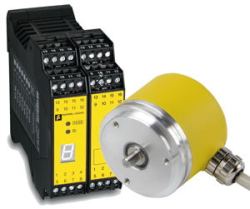Jan 31 2011
The sine/cosmic rotary encoder developed by Pepperl+Fuchs has an extra absolute track that eliminates the requirement of redundant sensor units. It will facilitate installations up to SIL3/PLe that are simple and cost- effective.
The RVK58S encoder measures 58mm in diameter and has a 1 pulse/rev sine/cosine absolute track that gives data on the rotor position. The absolute value is transmitted in the form of a digitized signal that has a 13-bit resolution utilizing SSI or BiSS protocols.

The company hopes that its application to TÜV Süd for relevant certification will receive approval for its application up to SIL3/PLe. This encoder will also mitigate any need for a second device for extra security. But this method proves to be very expensive. Normally, a second synchronous device is used in environments where security is crucial in monitoring. A comparison of signals emitted by the two encoders helps the monitoring system to track an errors or faults. Also, the total component count is so high that faults and errors are more likely to occur and expensive.
An ASIC chip featuring monitoring of signals and self-tracking are what makes this new device more reliable. The new encoder that is accountable for signal conditioning and self-diagnosis relies on an ASIC chip. It can track errors on the interrupter disc and in the signal path because it is able to study the sin/cos signals. It is also able to monitor supply voltage and temperature, which are valuable inputs. The outputs switch immediately turns to a high-impedance state in case it senses an error. This is monitored by a control system that can be turned off and on again to reset it for functioning.
The device will not need any mechanical protection when it is used in certain applications like the hydraulic end-travel stop buffers currently being used in warehouses. With the addition of the absolute track to the device, it becomes an ideal choice for both synchronous and asynchronous equipment. It utilizes the existing communication paths like the sin/cos or SSI/ BiSS interfaces as safety protocol.